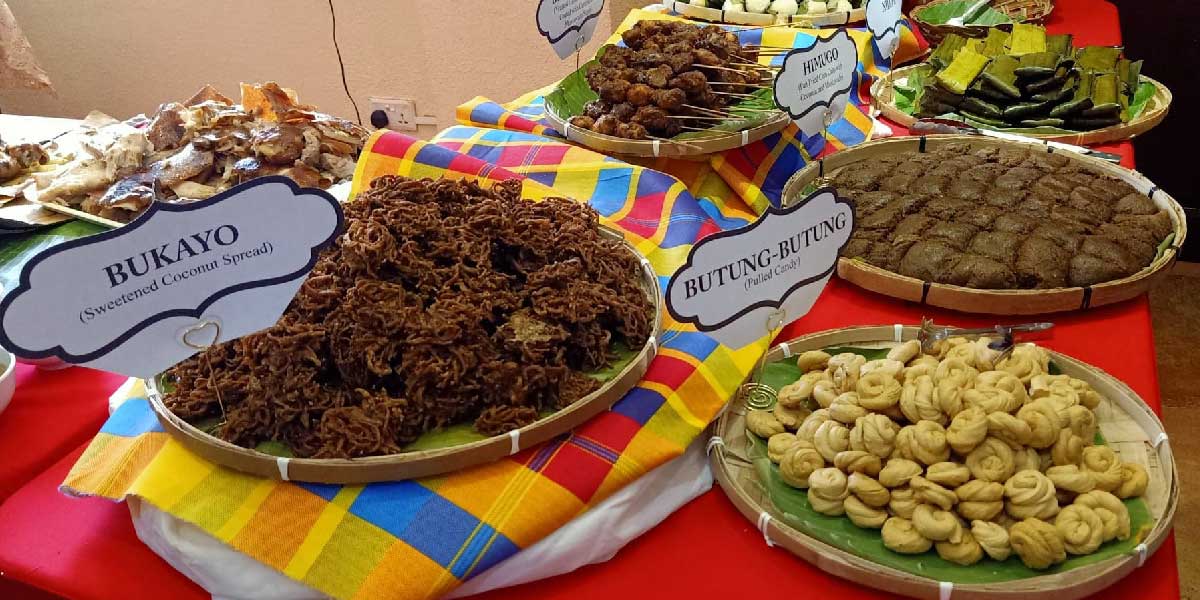
By Pilar S. Mabaquiao
Heirloom recipes recently got the attention of food enthusiasts after being featured in a research work of the 4th year BS Hospitality Management students of Advance Central College (ACC) entitled “Culinary Heritage of Antique.”
Mary Rose Rodriguez, president of Advance Central College, introduced more than 30 native cuisines from the 18 municipalities of the province via her thesis.
The thesis featured locals who kept the heirloom recipes and collaborated with the students in the completion of their research work.
One of the locals is Winnie Amalian from Barangay Bandoja Tibiao, who eagerly shared her recipe Lupo-lupo kag Awis (cooking weed with male snails).
“Aside from its being abundant in the area, Lupo-lupo contains a lot of important nutrients as all fresh and green leafy vegetables do, while the Awis is good for those who lack iodine,” Amalian said.
Most of the dishes used raw materials sourced out from the locality either they sprout abundantly in the area or grown by the locals themselves such as native chicken, shells, crabs, shrimps, fishes, pork mixed with different veggies, herbs, coco milk, some are wrapped in banana leaves or cooked in bamboo tubs to obtain different but distinct flavor, truly a signature of Antique’s unique flavors.
Rodriguez, who also served as a teacher and adviser of the BS Hospitality Management Students, said that the project hopes to document the rich culinary heritage of Antique for the younger generation to appreciate the creativity and diverse flavors of the past as well as discover the ways on how the elders cooked them.
“It is also our way of supporting the local farmers and producers by introducing their product or materials grown in their community to both domestic and online markets,” she said.
Some of the heritage dishes served during the culmination program are Nilaga nga manok with Piripinais (boiled stuffed chicken with sticky rice wrapped in banana leaves), Nilaga nga Tatus Boiled Coconut Crab), Linabog nga Pagi (Stingray in Coco Milk), Banag (Freshwater Snail with Coco Cream), Tinuom nga Kuritot (Small Shrimp wrapped in Banana Leaf Purse), Bisaya nga Manok Adobo (Native Chicken Adobo) and Chicken Binakol sa Kawayan (Native Chicken with Alopidan leaves cooked in bamboo).
Also featured are Ginataan nga Mawik (Mole Crab in Coconut Cream), Nilaga nga Tatus (Boiled Coconut Crab), Nilugob nga Ranga-Ranga (Grilled Spider Shell) from Caluya, Tirik (fresh Sea Urchin), and Ginisa nga Pasyak (Stir-Fried Cone Shell).
The appetizers also come in the form of Pako Salad or Fern Salad (Paku is found in the forest areas of the province) and Tambalang Salad (Seaweed Salad) from the island of Caluya.
The Antique’s delicacy is not complete without the sweets and desserts cooked with muscovado sugar such as Bandi nga Mani, Himugo, Bukayo, Butung-butong, Nilupi, Balisongsong among others.
“We want to preserve, document and produce a coffee table book for these heritage dishes,” said Rodriguez.
The coffee table book will also have its digital format.
She also expressed her appreciation to Governor Rhodora J. Cadiao and Deputy Speaker Loren Legarda who are supporting the project particularly in the production of the Coffee Table Book.
In their messages during the Culmination Program both Cadiao and Legarda lauded the initiatives of ACC in making Antique’s heritage dishes known to the younger generation. (PIA)























